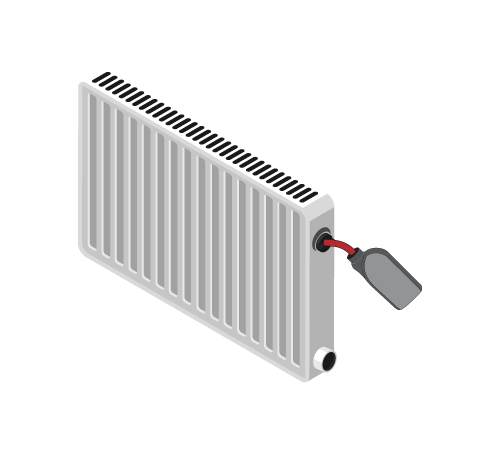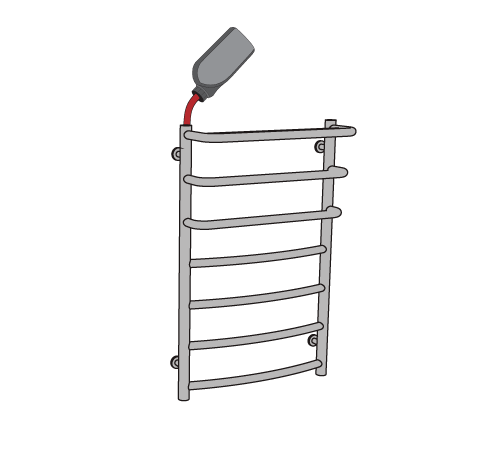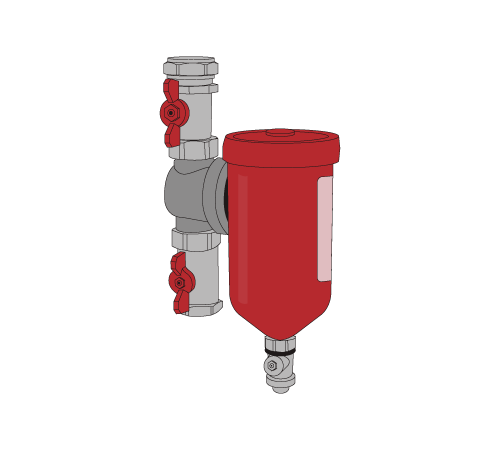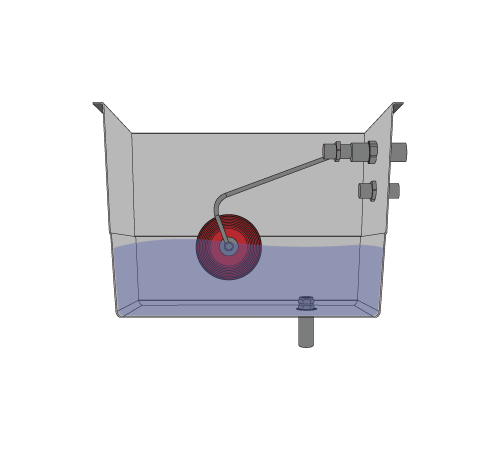EndoTherm – Installation Guide
EndoTherm is quick and easy to install into any wet heating system. Most installations can be completed without interruption and with no heating system downtime. Like an Inhibitor, EndoTherm can be installed into a heating system in a number of ways:
EndoTherm Installation Instructions

If you have a combi-boiler then you need to remove some water from the system. The system will be pressurised. Switch off the boiler and find a suitable radiator with a drain valve fitted or a drain valve at the boiler. Slowly vent the system to relieve the pressure. There will be a small screw at the top of the radiator for this purpose. When loosened, you will hear and see the water pressure drop. Use a cloth or towel to collect the small amount of water which is vented.
When vented, close the radiator inlet and outlet valves. You now need to make space for the EndoTherm to be added. On the radiator side of the inlet or outlet valve, release the valve joint with a suitable spanner. Collect a litre of water and then tighten up the joint.
Remove the plug from the top of the radiator. attached the provided EndoTherm installation kit (left), pour in the EndoTherm. Reinstall and tighten the plug. Ensure that the vent bleed screw is closed and tightened. Open the radiator inlet and outlet valves.
The system will now contain some air. Start up the boiler and gently bleed air from all of the radiators via the bleed screw. Re-pressurise the boiler system to the manufacturers’ recommended pressure (usually about 1 bar).
There are two dials one of which is the pressure dial and the other which is the temperature. Below the boiler is a filling loop which comprises of a flexible pipe, a handle and a double check valve. The double check valve prevents water from the central heating being sucked back into the cold water supply for the house.
The pressure dial should have a red line on it to signify the minimum pressure required for the boiler to work. This dial will increase in pressure when the combi is heating water so ensure that the central heating part is off and that no hot water is being drawn. If there is no red line then check the manual for the combi as putting too much pressure in the boiler will cause the blow off valve to blow, which will be vented outside of the property.
Most boilers require just over 1 Bar of pressure when switched off. If the pressure is below the minimum required for your boiler then slowly open the valve on the filling loop, this normally has a handle attached but a suitable tool may be needed. You should hear the water moving into the combi! Keep an eye on the pressure dial and when it reaches the correct pressure turn the valve off!
You can now use your boiler as normal.

The installation of EndoTherm into a towel radiator follows the same steps as a normal radiator. Towel radiators have the plugs at the top of the unit which allows an easier angle to enter the radiator.

Magnetic filter units are becoming more and more ever-present in domestic heating systems. They provide a great outlet to install EndoTherm and other heating additives.
- Turn off your boiler.
- Isolate the magnetic filter by closing the valves either side of it.
- Slowly open the valve at the bottom of the filter and drain the contents into a container, please use caution as this water may be very hot.
- When the vessel is empty close the valve just used for drainage, then open the filter by unscrewing the lower body.
- Fill the lower filter body with EndoTherm and re-attach.
- Re-open the valves either side of the magnetic filter once it is back in place. This will admit the boiler system water back into the magnetic filter.
- Switch the your boiler back on. The pump will distribute the EndoTherm throughout the system.
If your system requires more EndoTherm than the lower filter housing will accommodate allow 15 minutes for the initial charge to circulate then repeat the procedure until all EndoTherm required is installed.

If you have a conventional vented system then you can simply add EndoTherm to the feed and expansion tank, this will probably be in the loft. Before adding the inhibitor to the feed and expansion tank you will need to drain off some of the water so that the EndoTherm will be mixed with the water in the system.
To drain the tank either tie up the ball valve or isolate the water feeding it, then drain off all of the water present in the tank via a radiator or drain valve at the boiler if present. If no drain valve is present, using a suitable spanner release the joint at the radiator inlet valve and collect the water in a container.
Pour the EndoTherm into the expansion tank and turn the water back on, bleed the radiators until all air is expelled from the system

